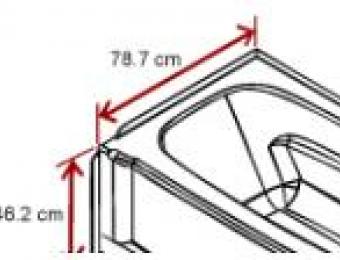Though it hasn’t always been common practice, insulating bathtubs is now a popular way to save energy and money. The water in your bath will lose a great deal of its heat through the sides and base of your bath, particularly if the bath is set against one of the house's outer walls. Preventing this from happening means you won’t have to constantly top up with hot water, and that you can relax in it longer.
Insulation doesn’t just keep heat in either, it can also act as a sound barrier to stop the normal hollow tub ‘thump’ that comes from the gap usually found between the wall and the bath. Insulating your bath is virtually risk free, and if your bathtub has yet to be installed or you are renovating, it's cheap and easy to do.

How to insulate a bathtub
The most popular way to insulate a bathtub is to coat the outside of the bath walls with spray on foam and then fill the spaces between the walls or outer panels with either more spray foam or another more rigid type of insulation. Most qualified plumbers and installers will only insulate after they're sure that the plumbing is installed securely and that there aren't any leaks. Moisture can cause mould to form and wood to rot, which in turn can cause structural damage if it's not caught early. Another source of moisture to consider is condensation, which may form when there is a difference of temperature between the air under the bath and the bath's surface. This is why coating the outer walls of the tub completely is recommended. Particular care needs to be taken with pumps and electrical components when insulation is put in place for a Jacuzzi or whirlpool bath.
What materials are used to insulate baths?
Almost any common insulation material can be used to insulate a tub, so you can do so even with regular materials. In a freshly constructed home, some foil-faced housing insulation cut offs could well be used. If you’re just renovating, even packing foam could find a place. If possible, avoid using materials like fibreglass, which can take a very long time to dry out if it happens to get damp.
For a very simple type of insulation, try using some bath foam solution when pouring your bath. The thick layer of bubbles will help blanket in a little of the heat lost from the surface of the water, and can help keep the tub clean for longer.


